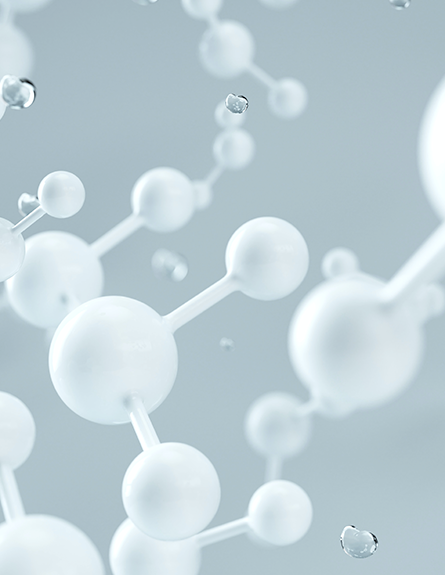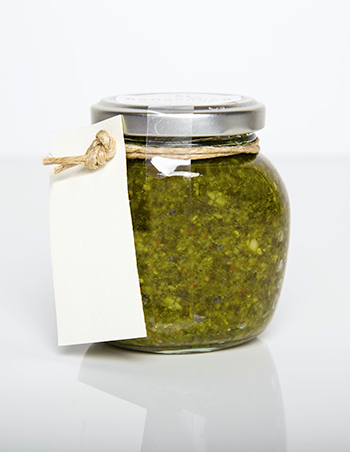
PFAs: The “Forever Chemical” You Want to Avoid
Date: 09/16/2022
You’ve probably heard about PFAs, and know that they’re not good for humans. But why is that exactly, and why did we start using them in the first place?
An entirely human-made chemical, PFAs are much more difficult to pronounce in full than they are to find. The presence of perfluoroalkyl and polyfluoroalkyl compounds – where the abbreviation PFA comes from – have in recent years become common-place in our water, food, and house-hold products (among other things).
Even we as humans are becoming filled with PFA-type substances, a fact which poses two significant problems. For one, PFAs take a long time to break down in the body, and, perhaps because of that, these ‘forever chemicals’ have long been associated with unfavorable health outcomes.
Which isn’t to say that no one is doing anything about it. For example, in August of 2022 the Environmental Protection Agency (EPA) said they would apply new measures that could potentially hold manufacturing companies accountable for any cleanup costs associated with chemical seepages into water or soil.
To do so, the EPA ruling would require companies to disclose the moment that soil and water testing analyses on-site show an elevated presence of PFAs.
The importance of this ruling cannot be overstated, particularly since the EPA have since acknowledged that “there is no safe level of the [forever] chemicals” when it comes to health risk. Nevertheless, I continue to wonder what on earth every-day people like you and me are supposed to do when it comes to protecting ourselves from these synthetic chemical compounds.
Sure, some of our water-bottles and non-stick pans tell us they’re PFA-free, but what else can we do to make sure we ingest the least amount of PFAs possible?
My answer? Same as always!
Research, research, research…plus a little help from our friends. That’s why I wanted to put together this article today for you all: to give you as much insight as possible into what are PFAs, how PFAs can be harmful to humans, as well as explore how to avoid PFAs.
My hope is that together we can stop investing in companies that continue to use PFA compounds directly, or who continue to source from PFA-friendly manufacturers. It’s the best way to use our buying power to help ourselves, and help future generations avoid high PFA content in their products, water, and food sources–especially when we know that removing PFAs from products can actually reduce PFAs in blood levels over a small period of time!
What are PFAs?
Simply put, PFAs (of which perfluoroalkyl and polyfluoroalkyl compounds are a type) are manufactured chemical ingredients found in common-use products. The chemical compounds themselves are linked with carbon atoms, which makes them especially strong and means they do not easily degrade. They also provide resistance to humidity, which is why we often see them used in non-stick items, or to create stain-resistant textiles.
How many types of PFAs are out there?
While the numbers often vary between different studies, the total number of PFA chemicals that exist in the world exceeds 12K.
Why do we use PFAs?
If PFAs are known to be associated with undesirable health effects in humans, then why do we even use PFAs at all? Obviously, the benefits are there, but if it’s a known pollutant, what is the continued draw for companies who buy or manufacture PFA-based products?
Now, even I can admit that PFAs work. Companies wouldn’t use them if they didn’t. But why else?
According to this article, even though PFAs are costly to produce in general, because PFAs “can be used in a much smaller amount” to get the same product performance levels as higher volumes of non-PFA chemicals, companies may end up saving money when they use PFAs in their products.
As far as bottom lines are concerned, using PFAs for product longevity makes good fiscal and business sense–though the risk is that your products will not pass PFA-related regulations as they continue to expand into new areas.
Are PFAs harmful to humans?
Yes, PFAs are harmful to humans. They are a persistent chemical found even in our air, with initial scientific studies saying that exposure may be linked to harmful health effects in humans and animals.
And while many studies continue to call for more comprehensive research around PFAs and their relationship with human health, scientific studies within the last decade or so have supported the following public health concerns relating to PFAs:
- Altered metabolism
- Impacts to fertility
- Reduced fetal growth
- Increased risk of obesity
- Increased risk of some cancers – though this article notes that cancer cases associated with PFAs are often limited to persons who live within the proximity of PFA-friendly manufacturing locations, where extremely high exposure is likely.
- Reduced immune system efficacy when fighting infections
That’s not all. When I dug around for more articles that link adverse health effects with PFAs, PFOs, PFOAs, or any other kind of chemical in this sub-group, I also found that:
- High PFA levels in the blood can lead to higher blood cholesterol levels.
- High PFA levels in the blood were correlated with reduced kidney function, and even chronic kidney disease.
- Limited evidence shows that PFA exposure may lead to testicular cancer, as well as reduced vaccine efficacy for preventable infections.
DISCLAIMER: I do want to highlight again that a lot of the research I found on the subject of PFAs concluded that more research is needed, and that data may still be considered insufficient to properly “characterize the impacts of PFA exposure” on things like neurodevelopment, for example.
At the same time, they say that the preliminary nature of these findings shouldn’t stop us from being wary of what’s to come as studies progress, and as more researchers continue to find more connections between elevated PFA levels and human health.
The true danger that remains, then, is that PFAs are basically inescapable no matter where you live. Their use is widespread, they are persistent in our environment, and they bioaccumulate over time within our bodies. For instance, this 2015 study of US persons found PFAs in the blood of 97% of their participants!
That’s a lot of PFAs walking around…carried as we move throughout our days none-the-wiser.
So, how are PFAs absorbed into our bodies?
There are quite a few ways that PFAs get into our bodies, with consumer products being top of the list since they promote exposure through multiple pathways, including dust inhalation or ingestion, hand-to-mouth transfer, or absorption through the skin.
For example, PFA-heavy products can shed dust fibers that we breathe in. Evidence from one case study even showed that frequent use of one stain-resistant carpet treatment led to elevated PFA-type chemical levels in the blood-streams of household members!
Hey parents! This study reveals that children may have elevated PFA exposure risk due to more direct contact with carpets and product dust…read more about it here.
Where are PFAs most commonly found?
Now that we all have a better idea of what PFAs are, and why to avoid PFAs, we can start to understand where these types of chemicals are most prevalent, both in terms of product type and geography.
Notably there are two PFA ‘zones’ we have to consider when we think about where PFAs come from, and how they get into the human body:
- Exposure via products that are manufactured with PFAs in their ingredient list
- Exposure through contaminated food and water sources
A cell phone may, for example, contain PFAs within many of its manufactured parts, whereas 2,854 locations in 50 US states and two territories are known to be high-risk for PFA contamination.
Let’s look at each of these ‘PFA pathways’ so that we can quickly learn which products to avoid, and how to best filter PFAs out of our water, and reduce PFAs in our food intake.
What products have PFAs?
While there are a ton of excellent studies out there with comprehensive product lists and industry types where PFA use is common, I thought I would provide you with a list of the more popular product types I’ve come across in my research, which have been associated with higher-than-average levels of PFA chemicals.
I think this is really an important point…especially since this study shows how PFAs are used in almost every industry you can think of, with more than 200 use categories.
7+ products and industries where PFAs are common:
- PFAs are commonly used in the production of plastic, rubber, materials for use in the electronics industry, as well as paints and other coating applications.
- PFA-based materials have been known to include fire-fighting foam, electro-plating, ammunition, climbing ropes, guitar strings, artificial turf (grass), and soil/ fertilizer products.
- PFAs are often an ingredient in grease resistant papers, fast food containers, pizza boxes, candy wrappers, and microwave popcorn bags…basically all the foods you want to avoid anyway!
- PFAs can be found in stain-resistant coatings for carpets and upholstery, as well as for water-resistant clothing.
- Personal products that come in close contact with your skin such as shampoo, dental floss, and other cosmetics like nail polish and make-up have been known to contain PFAs.
- Other consumer products that, when analyzed, show PFAs include apparel, building materials, and engine/ machine oils.
- Human-use products with PFAs where not many alternatives are currently available include personal care products and cosmetics (as we said), but also pharmaceuticals like eye drops, and even printing inks!
How do my food and water get contaminated with PFAs?
It can happen via a variety of different methods – whether because of a nearby manufacturing plant, or contamination through waterways or ‘migration’ – but food and water sources can become contaminated easily with PFAs thanks to ‘shed’ from our products, and product-processing facilities.
Unfortunately to date, PFAs have been detected in the drinking water of millions in the US.
The worst water contamination incidents across the globe so far? From two chemical plants, one in Veneto Region in Italy, and the other in Mid-Ohio Valley Region in the US.
Accidentally exposed to high-PFA concentrations through their drinking water, residents in either territory (numbering around 140K people, each) have had no choice but to drink the water around them. High PFA concentrations have therefore been found in a significant number of these residents, and studies are ongoing to determine the health effects of these people when compared to those in surrounding, non-contaminated areas.
PFAs also bind well with protein, and are therefore mostly found in protein-rich foods like liver, game meat, fish, and other farmed animals. The way they get into the food (aside from water contamination) is a whole other story known as migration–which you can read more about here. To summarize though, it’s the transfer of PFAs from food-adjacent products to food products themselves.
Fun Fact: the pH of food influences the extent to which PFA ‘migration’ occurs. Acidic foods (like tomato sauce) encourage migration, whereas basic foods (like white beans) do not. The same goes for salt!
To learn more about where PFAs are most commonly found, I suggest you check out the Environmental Working Group. They have an excellent landing page for all things PFA-related, including other topographical maps of the United States that depict high-risk locations for PFA exposure (you can find that here if you’re interested).
How to avoid products with PFAs
When it comes to avoiding products that may disrupt our overall health, I would usually say to check your labels…but with PFAs that’s not always possible. Often the presence of PFAs in products is not indicated or disclosed on product labels. In fact, chemical additives are rarely reported on product ingredient labels at all.
So what can we do to avoid products that have a high risk for PFA ‘migration’ (through dust, inhalation, or transfer)?
If I’m being honest…the answer is simply to do our best. We can filter our water (read my articles on water filtration here and here), avoid foods grown in certain areas, as well as limit our intake of high-salt, high-protein, or acidic foods…yet the prevalence of PFAs make it near impossible to avoid them altogether.
I did however do some more searching and found a few indicators that may help consumers like you and me understand whether there are PFAs in the products we buy. And since our purchases have a ton of power in terms of future consumer development, buying PFA-free products (like those from this list) will ultimately reduce the amounts of PFAs we come into contact with over time.
For example, many toxic-free product advocates say to avoid personal care and other products made with Teflon, or which have ingredients lists that contain the words “fluoro” or “perfluoro”.
This study – which explored which products may have higher PFA content than others – found that PFAs were only detected, and are therefore typical of, products advertised as water- or stain-resistant. In fact, the same was true even of products that give so-called ‘green assurances’ on their labels.
Getting the research bug? If you really want to get into it, I would suggest checking out the article mentioned above, which provides an extensive list of what kinds of chemical additives (which may or may not appear on product labels) have been correlated with high concentrations of PFAs.
Otherwise, your best bet is to keep doing as much reading and research as you can before you buy new…well…anything! Do your best to find ingredients lists from manufacturers, and to check out directories which list PFA products so you may do your diligence and buy PFA-free!
What do we do about PFAs?
At this point, the whole issue of PFAs might seem hopeless. Can we ever hope to be rid of these things!?
The good news is, there are already campaigns and regulations which actively target PFA use, and again with the recent news from the EPA, I am confident we will see a more targeted effort to reduce and even eliminate PFAs altogether.
Starting in 2000, the use of two popular PFA chemicals were for instance phased out gradually in the US. Many researchers have also set out to understand where alternatives are needed, and how such alternatives may be developed through raw material manufacture.
Theorists in the scientific community are also quick to promote the essential use concept, which suggests restrictions for PFA use on non-essential material items–though the idea has some critics. Finally, one research team recently learned how to reduce the so-called ‘immortality’ of this pesky forever chemical–meaning it’s possible that we will soon be able to break down PFAs in our water and food sources, as opposed to simply filtering it out!
So yes–even though PFAs can be harmful, and perhaps because we need to get rid of them, PFAs have become top of mind for tons of consumers and manufacturers who want to avoid polluting the earth further with man-made chemicals. And although I’m sure a lot of us want to help, it’s important here that we support organizations that want to make sure we can accurately detect PFAs, as well as…
- Learn the extent to which people in US (and around the world) are exposed to PFAs
- Understand to a significant degree how harmful PFAs are to humans and the environment
- Discover the best ways to remove PFAs from drinking water en mass
- Explore sustainable ways to manage and dispose of harmful PFAs so they are no longer an environmental disruptor
Until then, each of us can do our part to avoid PFAs as much as possible, and to put our money where our mouth is when it comes to purchasing products that are free of harmful toxins. What have you been doing to avoid PFAs, and what products would you recommend to those who want a great brand that supports good health and natural products?
We all want to be a little more chemical free, and I’m glad we can be on this journey together. I hope you were able to dig deeper into the world of PFAs to discover exactly why they’re such a big problem for people right now. Keep reading, share what you find, and do your best to build a healthy environment for yourself and your family.
Until next time my loves,
![]()
Lena
SUBSCRIBE
Get the latest updates, sneak peeks and more.
 Back To All Posts
Back To All Posts Previous Post
Previous Post

